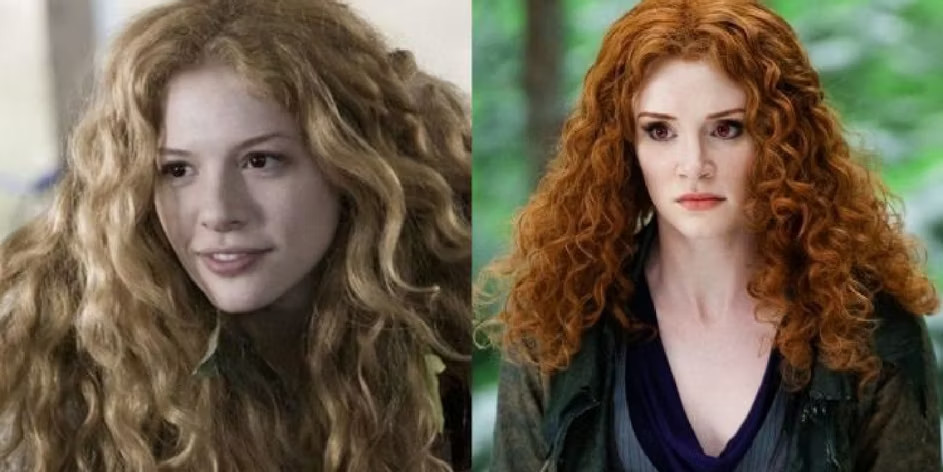
While Twilight wasn’t well-reviewed, the original movie beat New Moon and many of its sequels. So, where did the franchise go wrong with critics?
While none of the Twilight movies were critical darlings, the reception of the series still soured as the sequels wore on—and there were valid reasons for each failure’s underperformance. The Twilight movies were loved by ardent followers of author Stephenie Meyers’ bestselling paranormal romance saga. However, despite their success at the box office, the Twilight franchise never managed to win over reviewers who largely found the tween phenomenon to be laughably dour and self-serious, not to mention deeply problematic in its themes and depictions of romance.
Director Catherine Hardwicke’s adaptation of the first novel in the saga stuck close to the source material despite Twilight’s earliest original script draft contradicting a lot of Meyers’ characterizations. This resulted in many critics calling Twilight a gloomy, moody outing that would mostly appeal only to fans of the books. However, 2009’s New Moon soon proved that the franchise could be even more insular, with unimpressed critics saying that even those familiar with the books would fail to find much worth praising in the saga’s sophomore effort.
However, the critical fortunes of the Twilight saga improved somewhat with the release of 2010’s Eclipse. The more action-forward sequel was seen as a step up from New Moon, although director David Slade’s movie had issues of its own behind the scenes. Finally, the two-part Breaking Dawn provided an underwhelming ending to the series, with most critics relieved to be rid of the franchise by the time Breaking Dawn Part II’s infamous fake-out ending concluded. While the original Twilight wasn’t critically beloved, in retrospect, the original movie was among the saga’s better-reviewed outings. This has prompted many to ask what went wrong with each of the sequels and whether their missteps might have been avoided.
What Twilight Got Right
Although Hardwicke’s original adaptation was almost too faithful to the source material, its grunge-influenced cinematography, the story’s added murder mystery subplot, and the killer soundtrack stopped it from being a completely teens-only affair. Twilight was still firmly aimed at the target demographic of the original novels and featured plenty of mopey teenage brooding, but a soundtrack of genuinely great music and Hardwicke’s blue-tinged lensing ensured that these sequences at least looked and sounded superb. Add in Twilight’s murder mystery subplot (which wasn’t present in the original novel and gives the story some much-needed non-romantic tension), and reviewers were left with a darker, faster-paced story than the original novel. As a result, Twilight’s reviews were among the best in the series, partially because no later director was given as much creative freedom with the franchise as Hardwicke.
Where New Moon Went Wrong
With the studio now aware that Twilight was a guaranteed money-making machine, it was imperative that the movie’s first sequel jettison anything resembling risk. Thus, Hardwicke was replaced by Chris Weitz, who filled the 2009 sequel with broad humor, less conflict, and a brighter, blander visual aesthetic. Generally viewed as the weakest Twilight movie, New Moon lightened the franchise’s tone and opted for a warmer color palette that made the conflict-free story too slight to sustain its laggy runtime. Whether or not they were familiar with the source novels, no New Moon viewers bought that Edward would actually end up dying by suicide, meaning his storyline amounted to a narrative empty threat. Not only that, the Edward vs. Jacob love triangle didn’t pay off until the next movie, leaving New Moon with almost no story to tell and a long runtime to fill with its non-plot.
Where Eclipse Went Wrong
2010’s Eclipse is comfortably the most underrated movie in the Twilight series, a big improvement on the original novel and a major step up from New Moon’s adaptation. However, even Eclipse had its issues, starting with an unnecessary decision to replace one of Twilight’s original trio of villains. Recasting Victoria in a series where there are only a handful of major villains was unnecessary and impossible to ignore, particularly when her associate Laurent was still played by the same actor as before only one movie earlier. Meanwhile, when it came to story structure, Eclipse had another, bigger issue. Keeping Jacob, Edward, and Bella far from the finale’s action—while book-accurate—sapped the story’s ending of its potential impact. While Twilight was right to cut the character deaths that were added to its first script draft, this sequel, in particular, stuck too closely to the stories outlined by the source novels. As a result, viewers were subjected to the central trio freezing on a remote mountaintop for much of the movie’s runtime in the saga’s least engaging subplot
